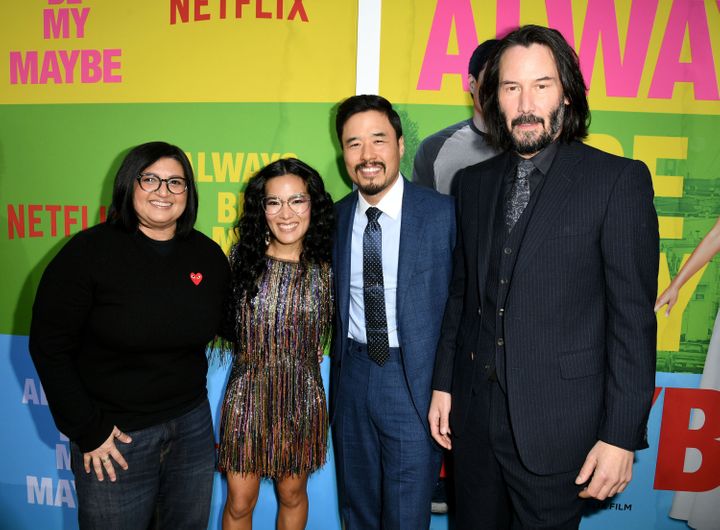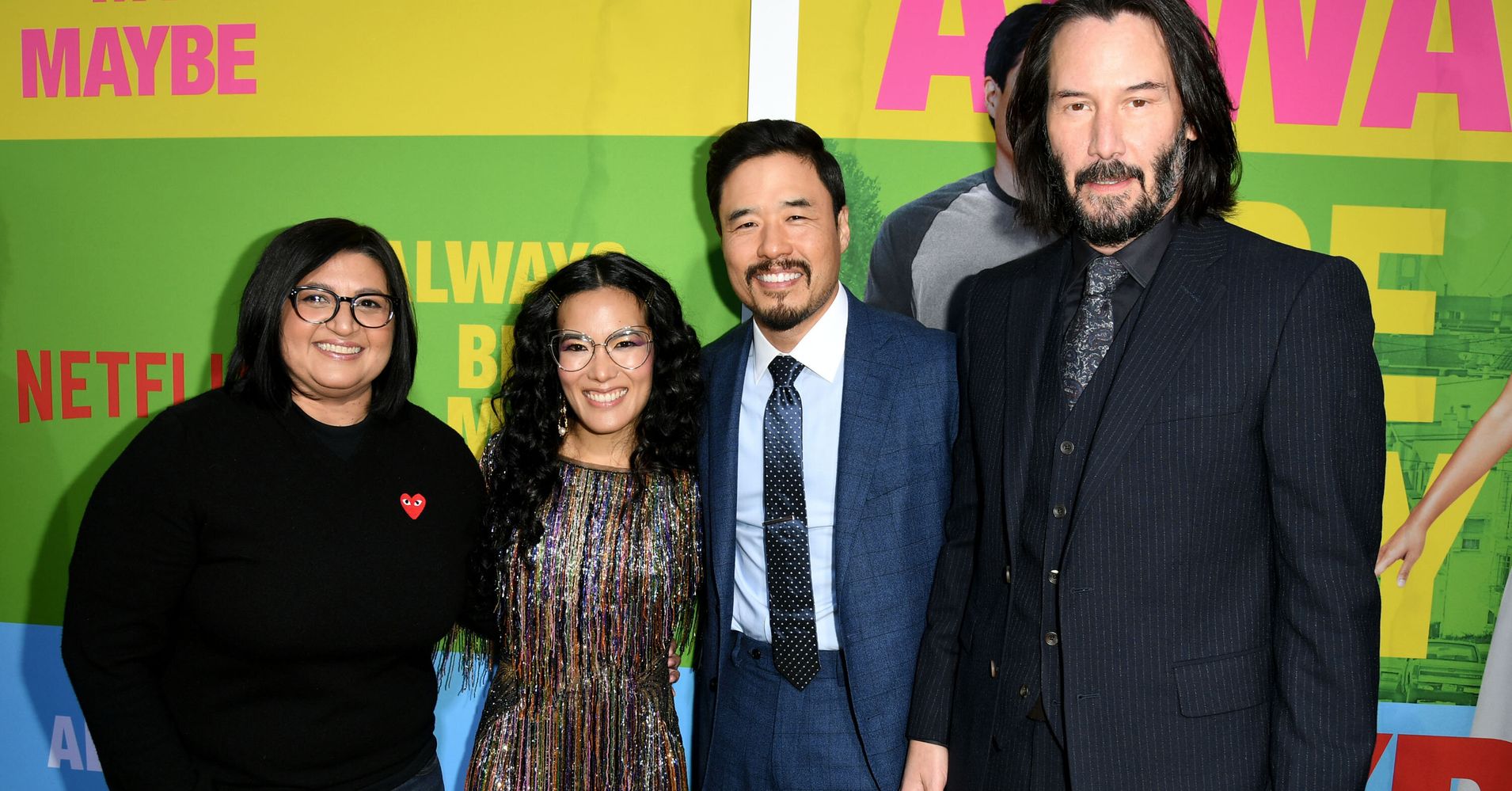[ad_1]
While Netflix rom-com “Always Be My Maybe,” starring Randall Park and Ali Wong, has been drawing significant buzz for its representation of Asian American couples on-screen, the film’s casting isn’t the only reason the movie is quietly revolutionary.
The film conveys love and emotion through a specifically Asian American lens, giving the traditional motifs in the stereotypical Hollywood rom-coms a slight remix.
Many of the ups and downs, affection and comedy in the film are expressed through food, with dishes steaming up the screen carrying symbolic messages of their own. The concept is particularly striking to Asian American viewers, many of whom grew up with parents who seldom expressed their love verbally and explicitly, opting instead to mercilessly shove food onto their plates at the dinner table.
In terms of storytelling for the movie, it was a big way to show the connection between Randall and Ali’s characters from the beginning.
Director Nahnatchka Khan
“Food is so many things to us,” director Nahnatchka Khan said. “Food is love, food is memories. It can feel nostalgic and you can feel transported immediately. In terms of storytelling for the movie, it was a big way to show the connection between Randall and Ali’s characters from the beginning.”
Several critical parts of the movie are accompanied by cuisine that mirrors the moment. The familial love Wong’s character Sasha craves as a young latchkey kid is fulfilled by the parents of Park’s character Marcus ― particularly Marcus’ mother, Judy. That warmth is established by Korean comfort food kimchi jjigae, which Judy teaches Sasha to make.
“When creating the story, they didn’t want them to meet as adults and sort of meet-cute,” Khan said. “They wanted to embody and seep them in this history that they know each other in a way that other people don’t. Food is a big part of that.”
The movie’s ending brings the couple full circle as celebrity chef Sasha opens a restaurant called “Judy’s.” The special dish, cementing Sasha’s feelings for Marcus is, of course, kimchi jjigae.
“Judy has such a big effect on Sasha, you can track the storytelling through food. When she goes back to the thing we’ve set up in the beginning for her, you feel that journey,” Khan added.

Filmmakers used food to mirror the bizarre and awkward moments as well. After Sasha and Marcus lose their virginities to each other, the awkward moment is followed by a perhaps even more uncomfortable scene at Burger King. And one of the most iconic scenes, the Keanu Reeves double date, is marked by ridiculously pretentious dishes that feel cold, inaccessible and absent of comfort.
“Do you have any dishes that play with time?” Reeves, playing a heightened, jerkwad version of himself, requests at the table. “The concept of time?”
Khan noted that the plates presented added to the scene’s absurdity.
“This section of the movie when Keanu comes in ― everything feels a little bit out of control. You’re really tracking Randall’s character through the whole sequence. Randall is amazing in that scene because he’s just trying to wrap his head around what’s going on and we just wanted to add to that confusion and chaos,” she said. “The food can contribute to that.”
Khan added that Los Angeles chef Niki Nakayama served as the film’s food consultant and used the ludicrous meals in the scene to create humor.
“She can kind of lampoon a little bit and make fun of those high-end foodie destination restaurants,” Khan said.
“Always Be My Maybe” also reaches beyond the confines of romantic love, hitting on the importance of family, a theme so central to the Asian American experience it’d be remiss to ignore in this context. Sasha’s deep ties to Judy, in some ways, even precedes her emotional relationship to Marcus.
As Khan points out, “Sasha has to reconcile with her parents, who were absent growing up and she was a latchkey kid, which opened the door for Judy to have such an influence on her.”
In the scene where Sasha’s parents make amends for their absence, Khan notes, Sasha’s parents attempt to affirm their own love for her in a way only some hilariously Asian mom and pops really could ― by paying full price at Sasha’s restaurant.
“To us, that’s their version of love,” Khan added. “There’s the parental love and then there’s the love between the two characters. It was important for Ali and Randall and [co-writer] Michael Golamco to just have it feel real.”
While Khan said these details weren’t written to explicitly exemplify love through an Asian American lens, but because the writers ― Wong, Park and Golamco ― are Asian American, it was only natural that love manifested itself in this way in the movie.
“From the get-go, this was their story to tell. There was never any version of it that wouldn’t have been Ali and Randall,” she told HuffPost. “It was always going to be Sasha and Marcus as Ali and Randall. And how they relate to each other and how they express love for each other and their families and whatever makes the most sense for them.”
Khan added, “The depiction of love feels very authentic to their world.”
REAL LIFE. REAL NEWS. REAL VOICES.
Help us tell more of the stories that matter from voices that too often remain unheard.
[ad_2]
Source link

